4
High Trust Products5
Compatible Products3
Not Working ProductsChargers and Power Banks
Headphone & Speakers
Cases & Covers
Virtual Reality
Cables & Adapters
Media Player
Laptop
Tablet
Desktop
Cell Phone
Printers & Copiers
Memory Cards
TV
Computer Display
Game Console
Smart Home
Wearable Technology
Photo & Video Camera
Car Electronics
Car
Networking Equipment
Smart Toys
Home Audio & Video
Professional & Industrial
Storage Drive
Docking Station
Game Console Controllers
Set-top box
Keyboard, Mice, & Stylus
Portable Music Player
Computer Parts & Components
Cordless & Speakerphones
Projector
Software
Reporting
Dell XPS 15 9550
by Dell Inc.







Interested in this product?

Select a product category to see which devices type we recommend to use with the Dell XPS 15 9550:
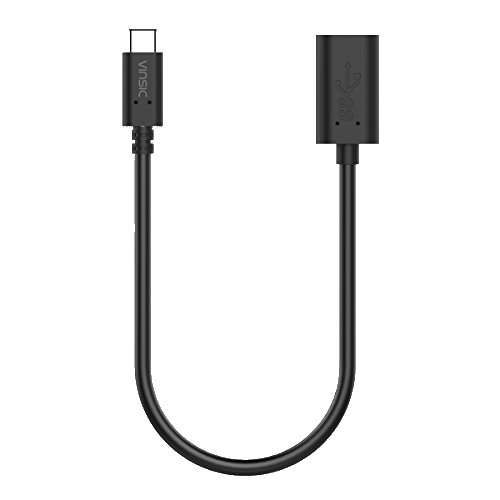

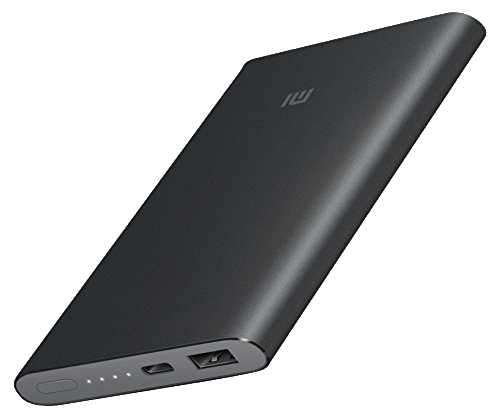
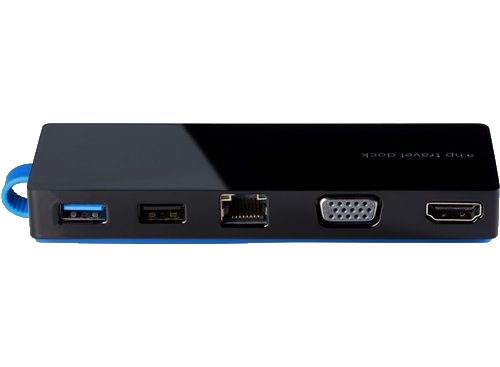

Dell XPS 15- Showing Off Thunderbolt 3 over USB Type-C
The Dell XPS 15 is one of the first wave of Windows PC notebooks that has a Thunderbolt 3 port. Thunderbolt 3 uses a single USB Type-C port to support Thunderbolt 3, USB 3.1 Gen 2, USB Power Delivery, and DisplayPort 1.2. That's a lot of technology to cram into its neighboring USB Type-A and HDMI ports which are just support a single interface technology.
I purchased the XPS 15 on the Dell online store which was delivered after a few weeks given it was on backorder.
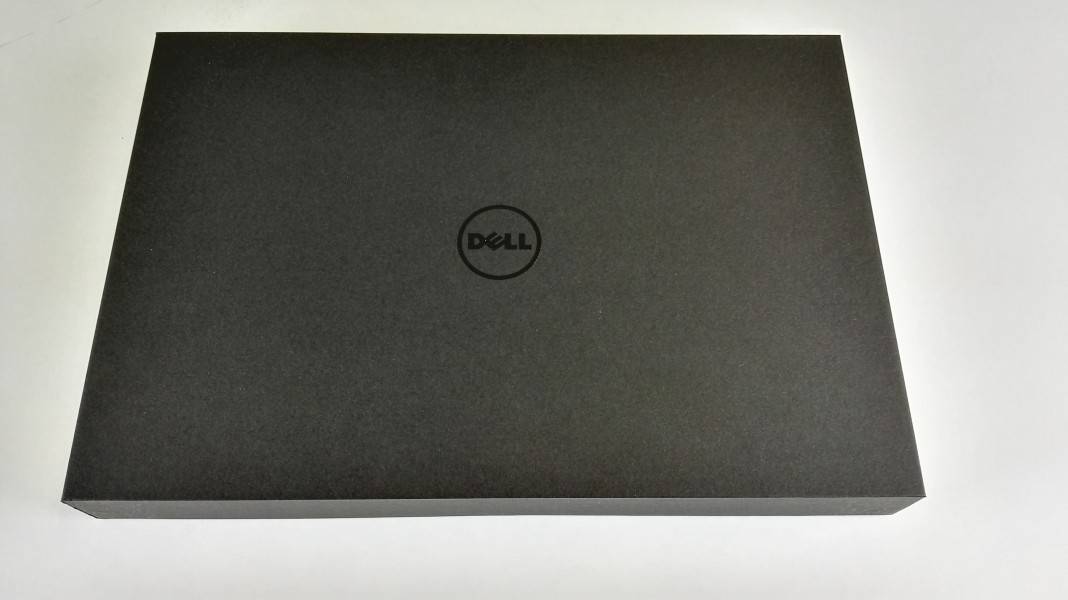
Opening up the dark gray XPS 15 box revealed a seriously nice looking PC. The angles and curves of the XPS 15 look great and as soon as I took out the XPS 15 out of the box, it seemed like everyone wanted to get their hands on it.
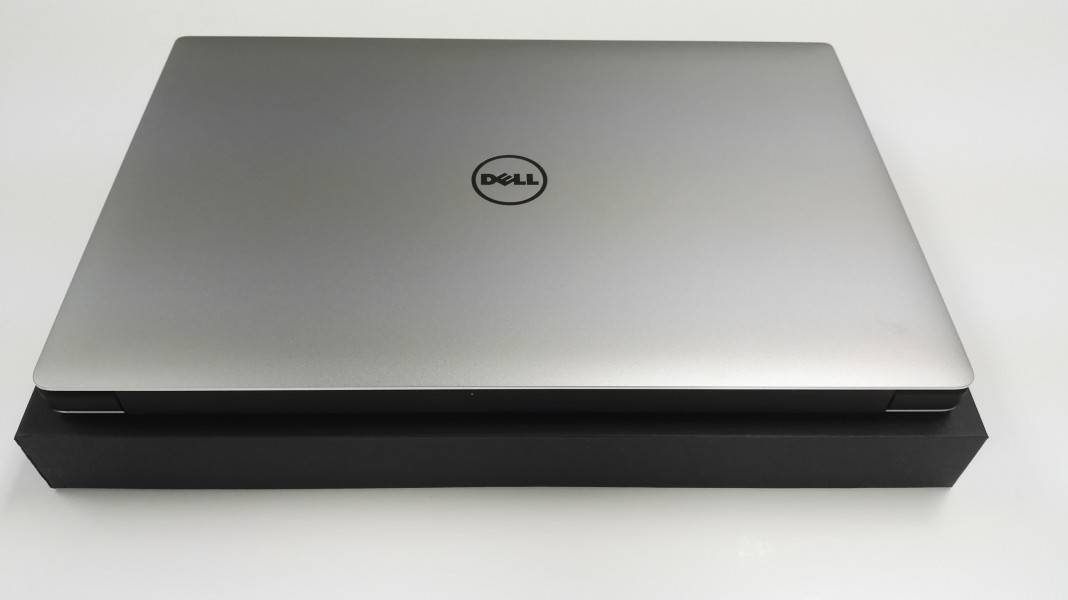
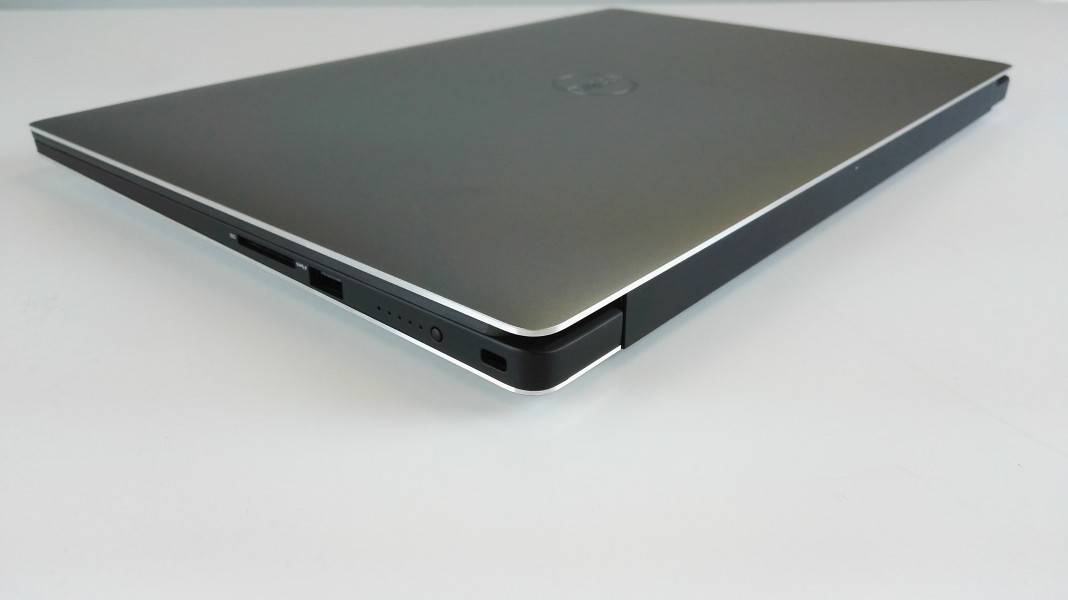

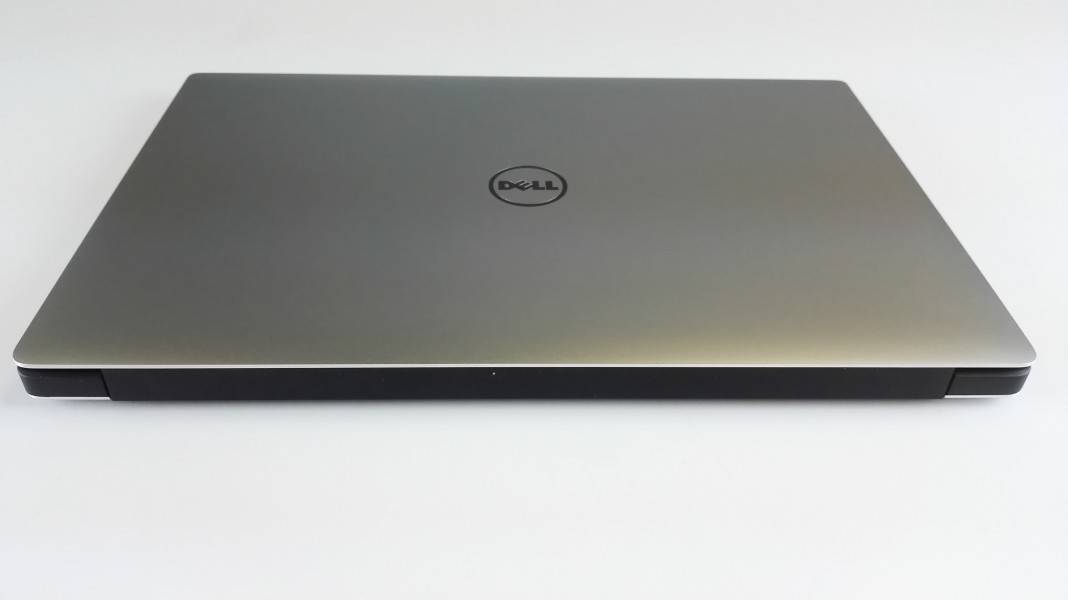
With such an intent focus on aesthetics, Dell even hid all the XPS 15 model information behind the back lid that says XPS. You'll need a long fingernail or some thin screwdriver to flip up the flap.
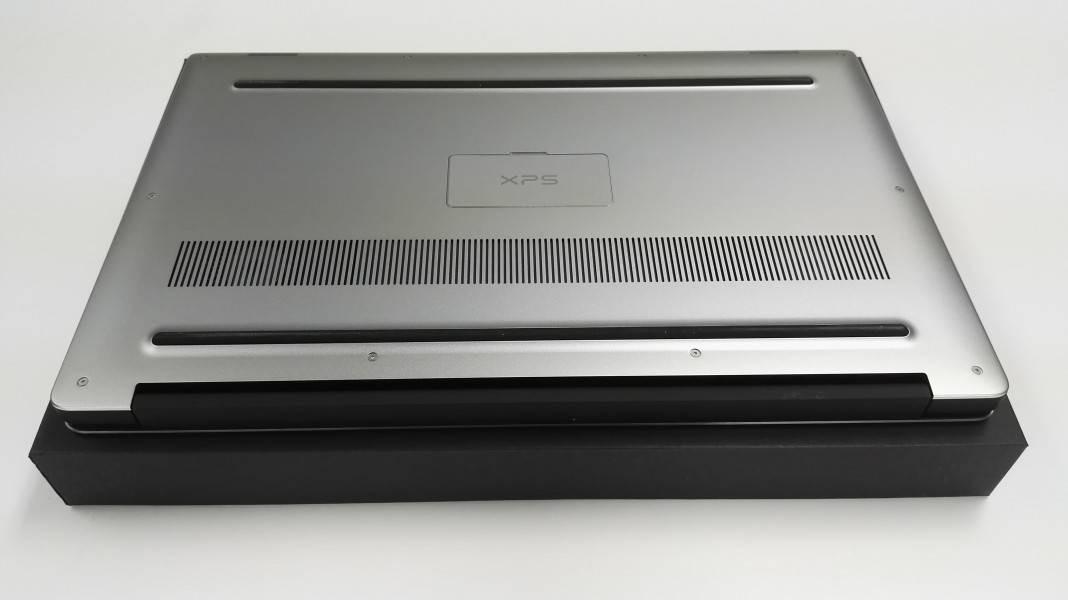
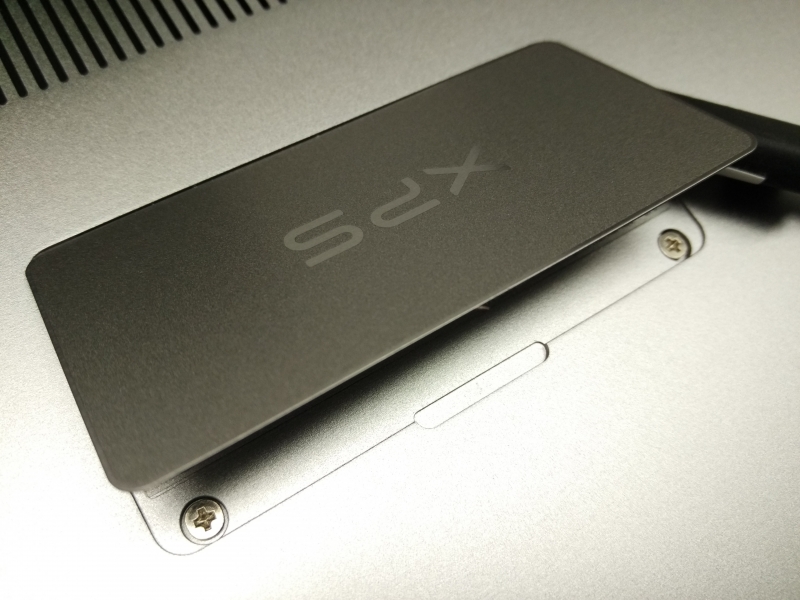
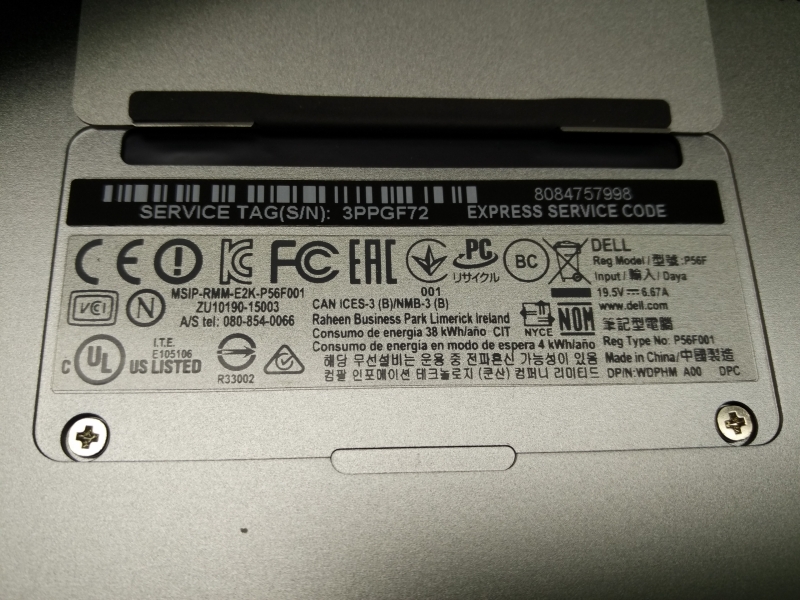
The XPS 15 includes a variety of interfaces. The fasest interface available is Thunderbolt 3 which uses the USB Type-C interface and has a lightning symbol next to it. Don't confuse that with the larger USB Type-A interface which has a SS trident and lightning symbol together.
Different companies support different features for USB Type-C and in general there is inconsistency regarding what symbols are used and whether a symbol is even used. However, if you see a USB Type-C port with the Thunderbolt's lightning symbol, that always means the port will support Thunderbolt 3, USB 3.1 Gen 2, USB Power Delivery, and DisplayPort 1.2.
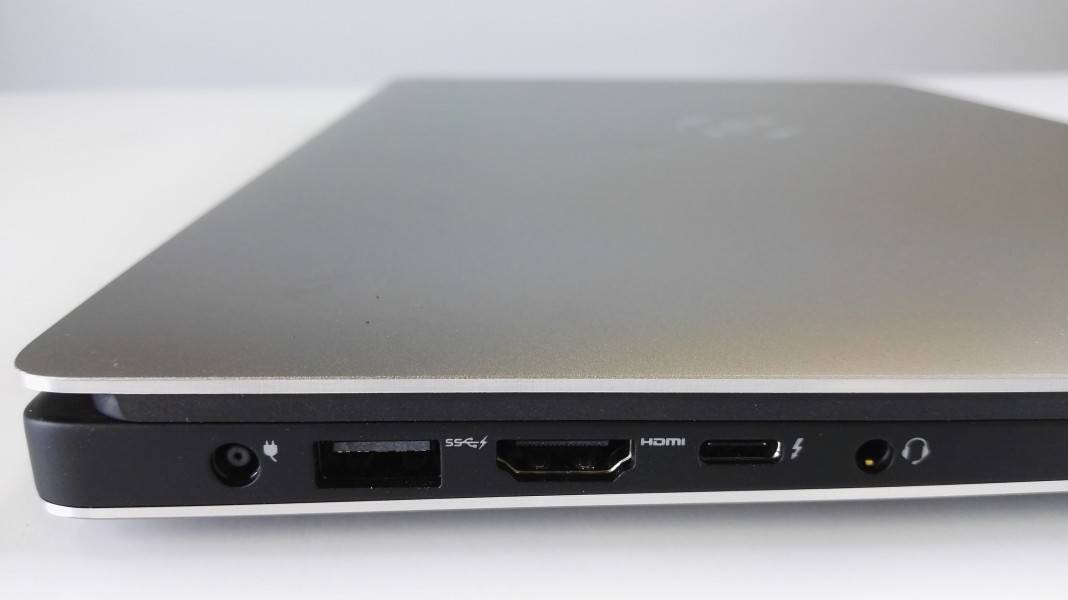
The XPS 15 also comes with the more common USB 3.1 Gen 1 (5 Gb/s) Type-A, HDMI 1.4, 3.5mm audio, and SD (UHS-I) card interfaces.

Now unlike other early USB Type-C notebooks like the Apple MacBook (Early 2015) and the Google Chromebook Pixel (2015), the Dell XPS 15 doesn't use the USB Type-C port as the primary means to power the notebook. Instead, it uses a traditional large external power brick that connects to a circular receptacle dedicated just for power on the notebook. However, if you are not using the USB Type-C port, you can also use the USB Type-C port to power the PC from a USB Type-C source (like another PC or power adapter).
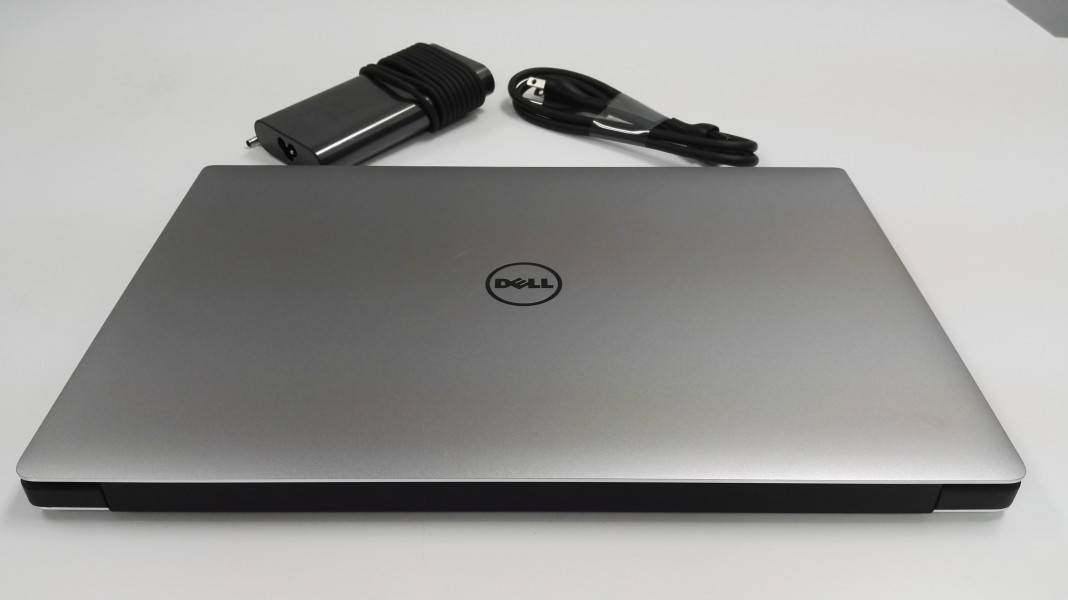
To start the XPS 15, make sure you have plugged in the external power adapter and press the power button. You'll see a welcome screen where you can input your regional information.
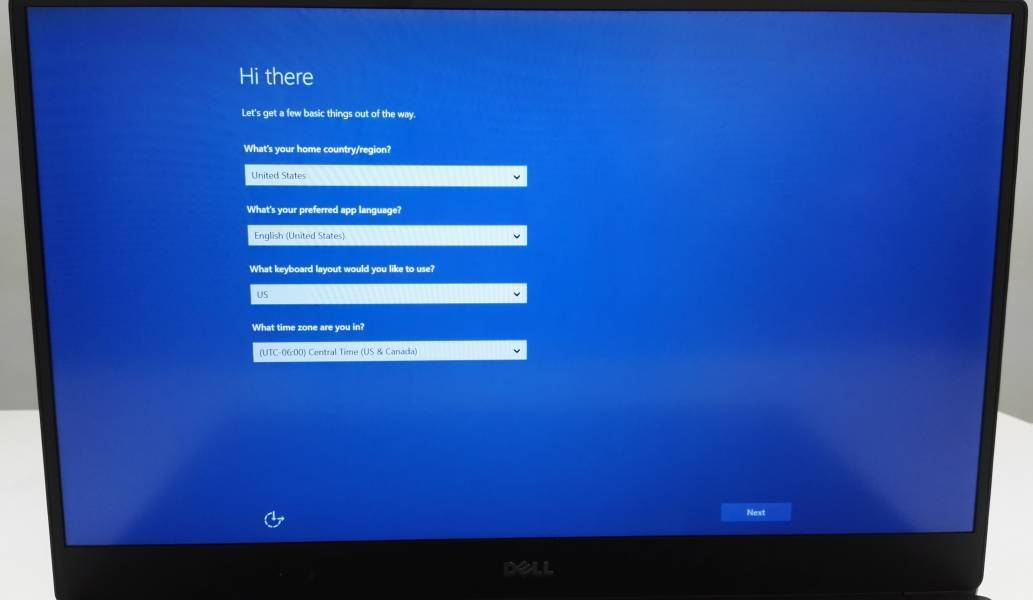
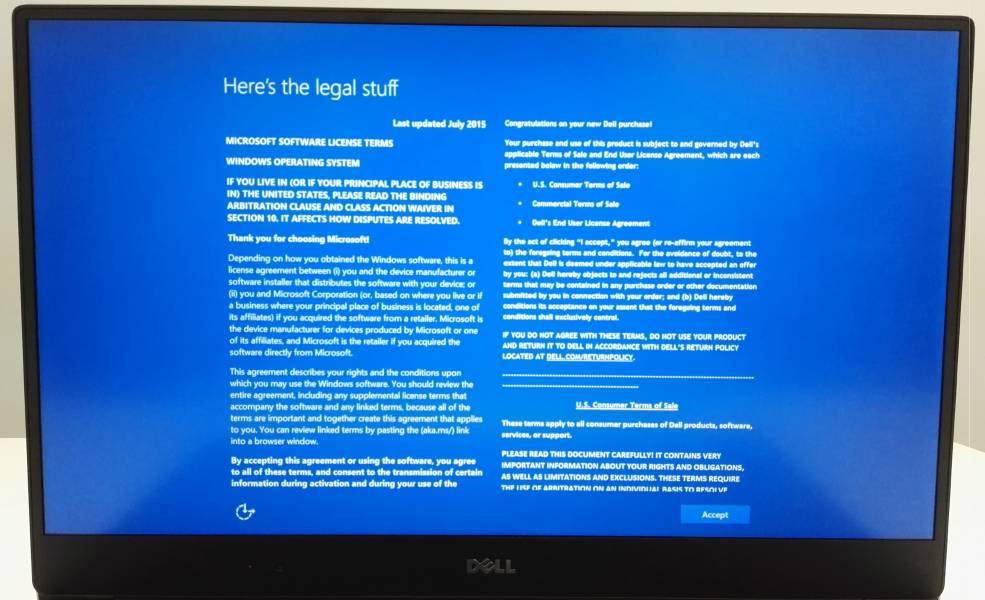
After you get past the legal stuff, Windows will ask if you want to use Express Settings.
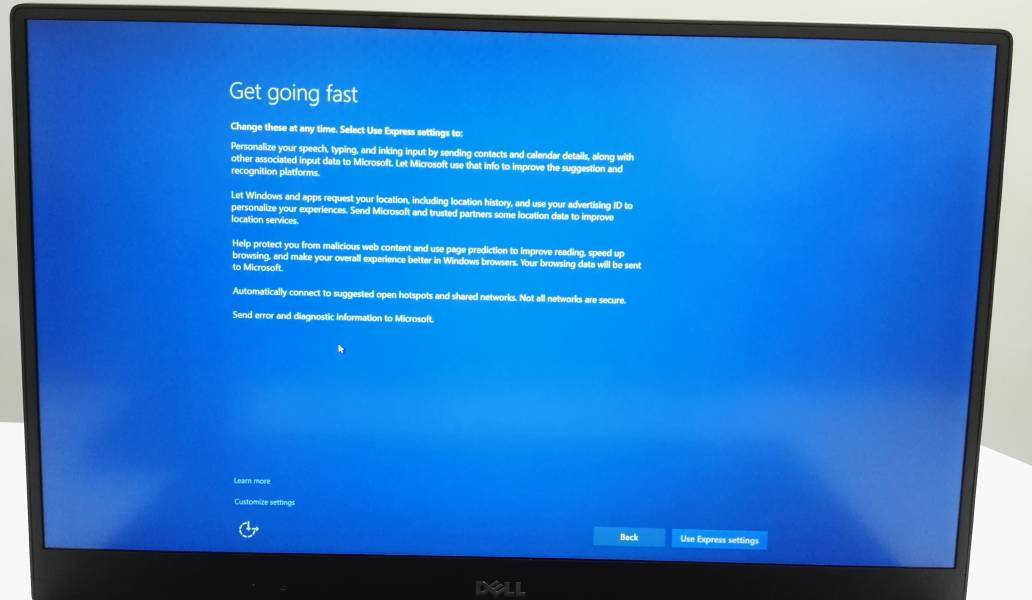
In the next login screen, you can create your username and password. Unfortunately, after creating your username the screen was stuck at "Just a moment" even when left on overnight. Even after multiple restarts, Windows would not boot up after the user login screen.

Figuring something was really off given this was a brand new machine, I took the Dell XPS 15 to the Microsoft Store at the Westfield Valley Fair Mall in Santa Clara, California. Even though I had purchased the XPS 15 from Dell's online store, Microsoft provides some degree of technical support for any Windows based devices even if purchased elsewhere. Unlike the Apple Store located nearby where it's almost impossible to schedule same day technical support, it was pretty easy to reserve a technical support slot at the Microsoft Store.
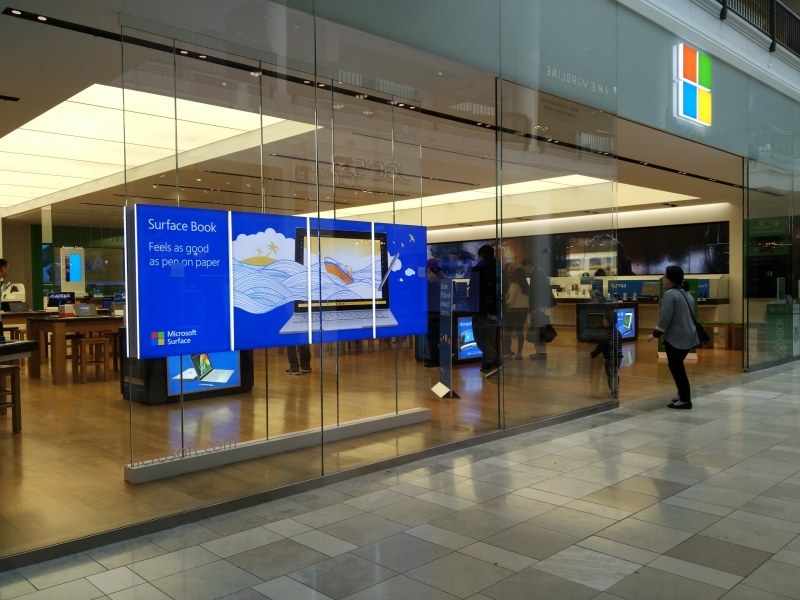
After looking at the Dell machine, the Microsoft technical support person that there was something wrong probably on the image of the drive and that he could install a fresh Windows 10 image that same day. Even though it didn't looks like there was anything wrong with the Dell itself, it was possible that somehow during production of the Dell XPS 15, Windows 10 didn't get properly loaded by the factory.
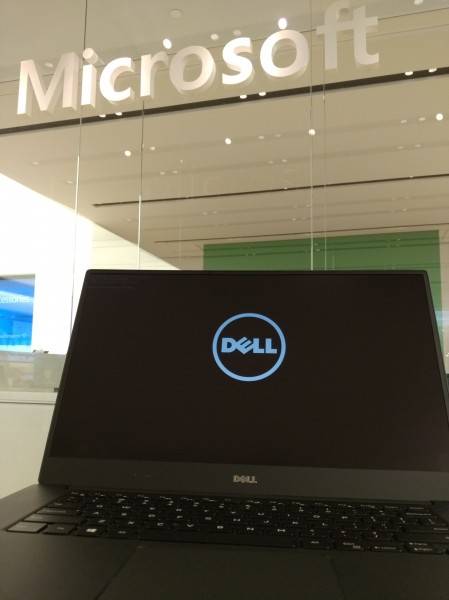
When I came back the next morning to pick up the XPS 15, everything booted up normally and after user login I was greeted by the Windows 10 desktop. The quick support and turnaround at the Microsoft Store was great and didn't cost a dime.
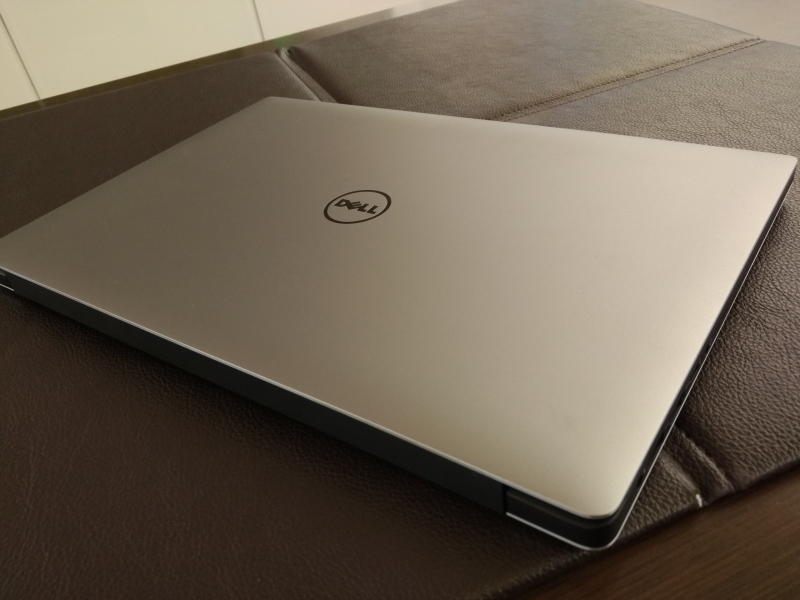
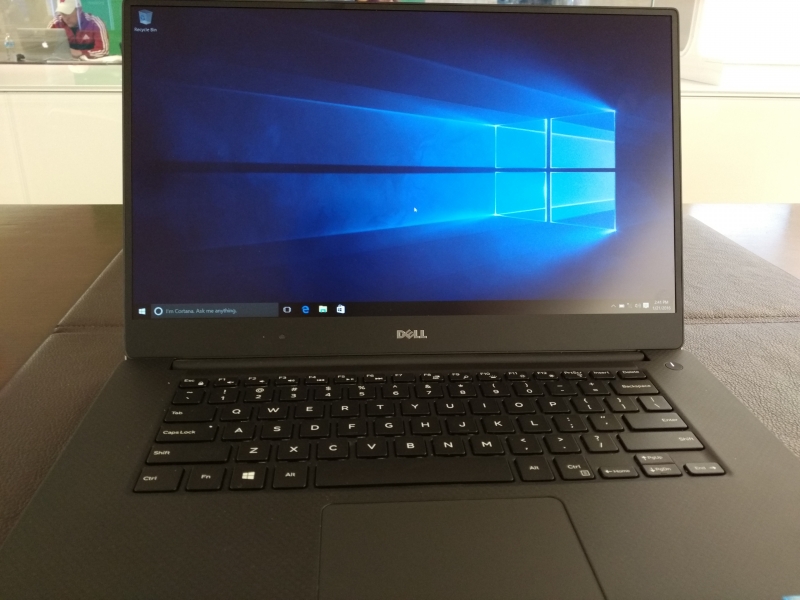
I took back the Dell XPS 15 back with me to the Old Port Lobster Shack in the same mall to continue checking out the machine. If you like tasty Maine style lobster rolls and other New England style fried seafood, the Old Port Lobster Shack is the place for you.



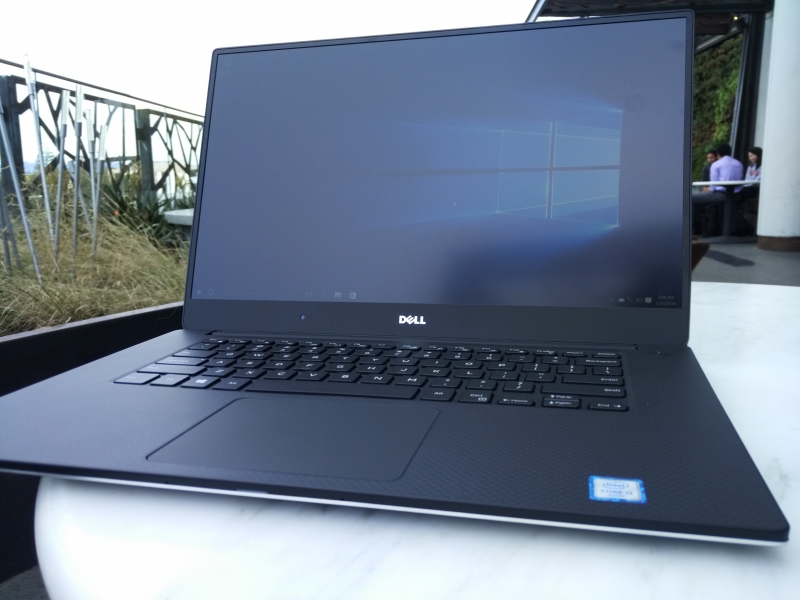
Now that Windows on the XPS 15 was working well again and my lobster roll fix satisfied, let's take a closer look at the interfaces.
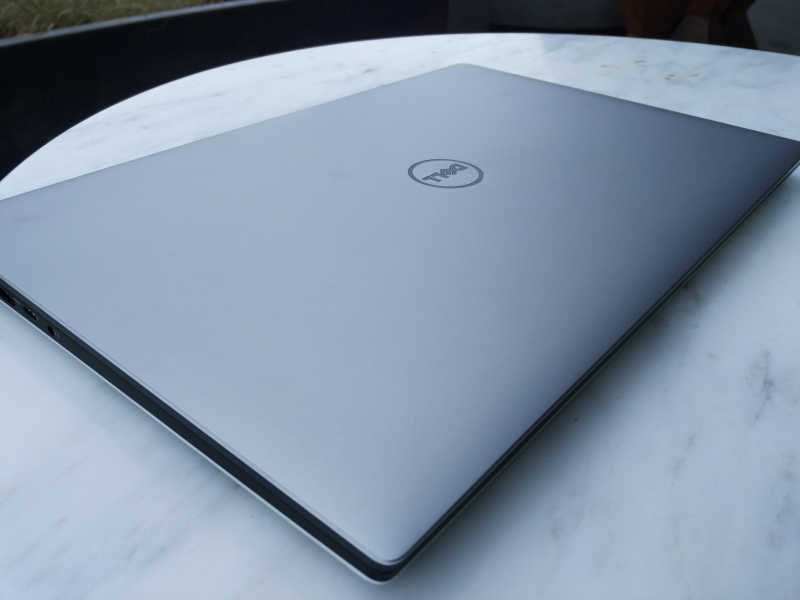
To charge the XPS 15, use the 130 Watt AC power adapter that comes with the computer. You can use the USB Type-C port for charging the XPS 15 which charges at the same speed as the AC power adapter assuming you are using a 20 Volt capable USB Type-C power source.
The XPS 15 comes with a couple ways to provide power to devices connected the notebook. The two USB Type-A ports provide USB 3.1 Gen 1 (5 Gb/s) connections and charges at 5 Volts at 1.5 Amps. If you need to charge USB Type-C devices, use the USB Type-C port which supports even more power than the USB Type-A port.
For both the Type-A and Type-C ports, Dell has labeled them as PowerShare capable meaning that they can charge supported downstream devices even if the XPS 15 is turned off or in hibernate mode. Note the XPS 15 needs to have the AC adapter plugged in and PowerShare needs to be enabled in the notebook's BIOS settings.
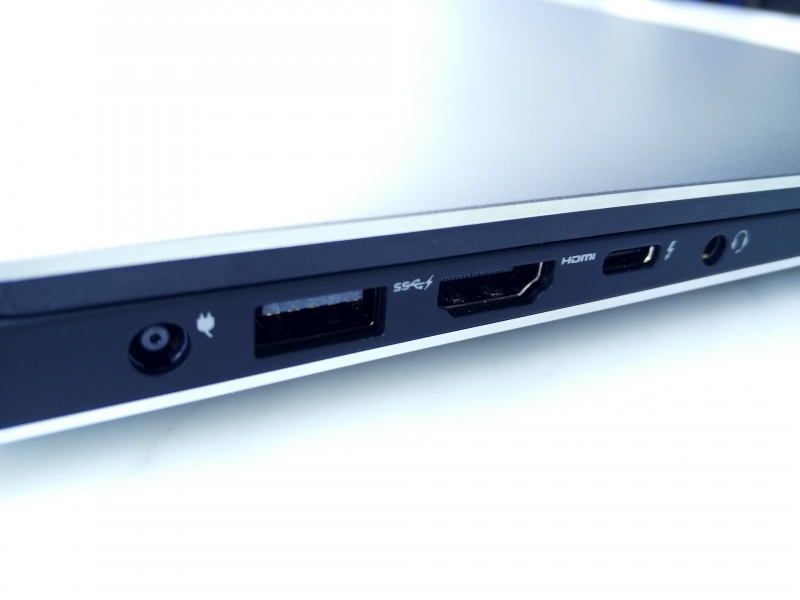
If you want to connect the XPS 15 to an external display, you can either use the HDMI or USB Type-C connector.
With the HDMI 1.4, you can directly connect to any monitor or TV supporting HDMI. If you want even higher resolutions (e.g. 4K@60Hz), you can use the XPS 15's USB Type-C port. With the USB Type-C connector, you can directly connect to one of the new DisplayPort 1.2 over USB Type-C enabled displays like the LG 27UD88 and LG 34UM88. You can also use USB Type-C to standard DisplayPort and USB Type-C to VGA adapters to connect to other monitors you have through the USB Type-C port.
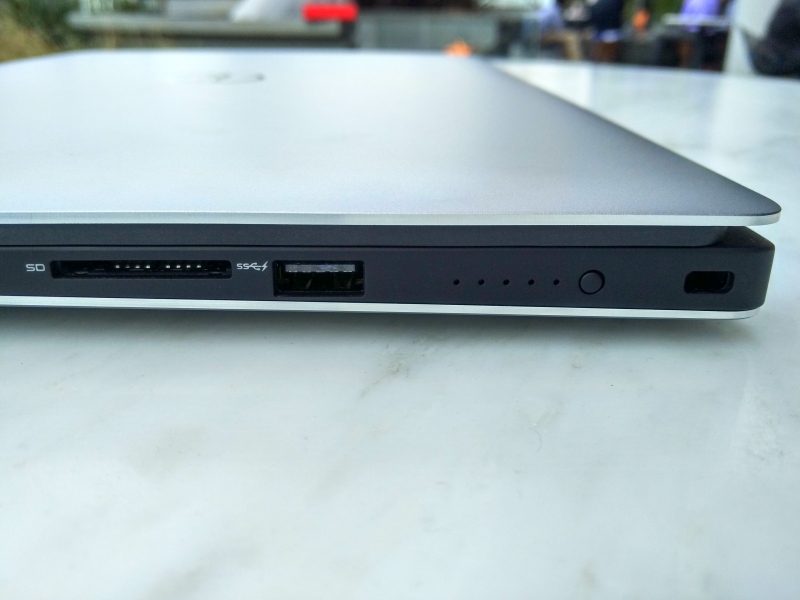
Most of the USB devices you connect to the USB Type-A ports on the Dell XPS 15 will be USB 3.1 Gen1 (5 Gb/s) but once more Thunderbolt 3 (40 Gb/s) and USB 3.1 Gen 2 (10 Gb/s) devices are available, you should be able to get a lot more out of your USB Type-C beyond just video and charging.
The Dell XPS 15 9550 is a great looking notebook and really comfortable to use. It's packed with the latest connectivity technologies making your investment future proof for quite a number of years. If you are looking for a smaller version but with the same great features, check out the Dell XPS 13 9350.
View Full Article
Featured Products
 GTrusted
GTrusted


































